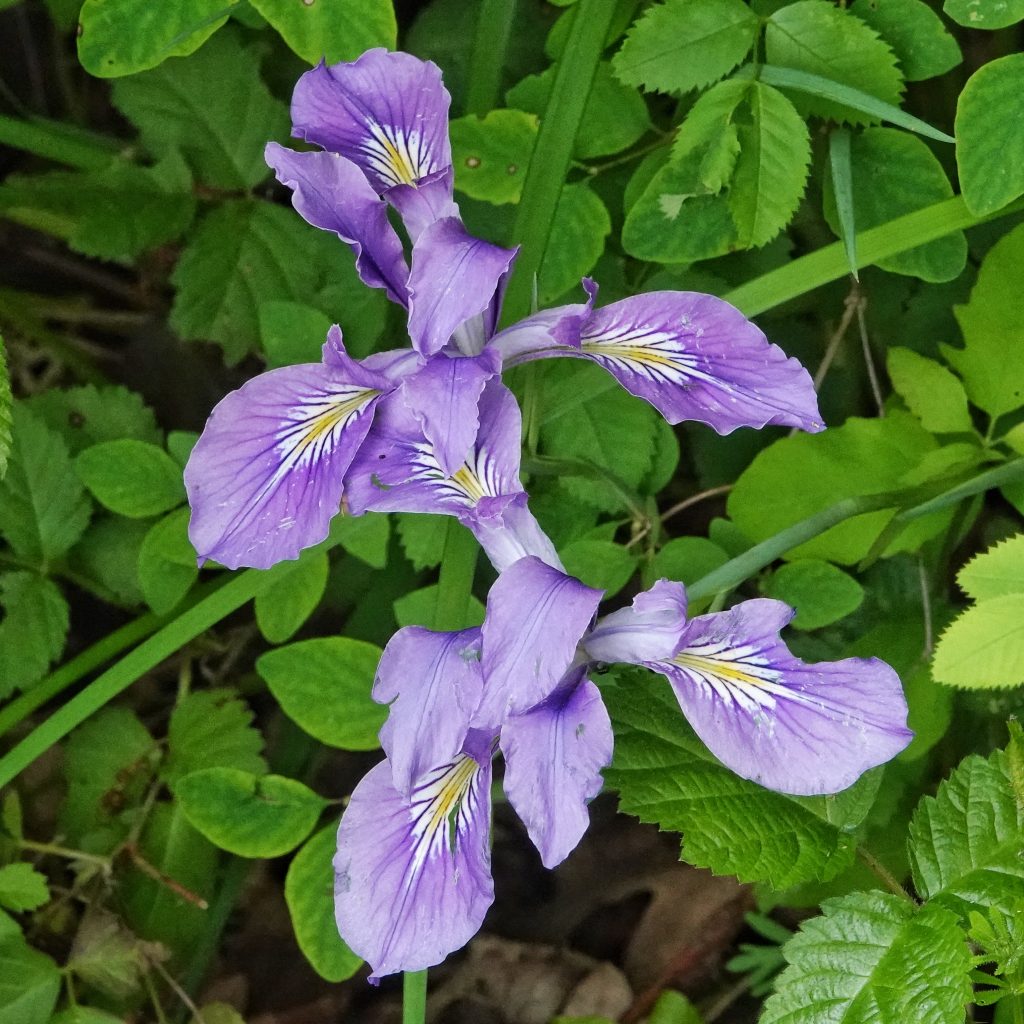
Due, I’m assuming, to our cool and abnormally wet spring, it has not been a banner year for Iris tenax.Though I usually start finding them in mid April, I didn’t start seeing any this year until late May, and even into June they were not blooming in their usual profusion in spots I’m used to finding them. My first memories of finding what I assume were Iris tenax, though we just called them wild irises, come from the first week of May, 1989, when I’d just met my first future ex-wife and we seemed to find these plants blooming everywhere we went. In particular I was grateful for the joyous distraction they provided for what could’ve otherwise been a long, tense walk along a deserted county road, a walk necessitated by (who’d’a thunk it) yet another breakdown of my $35 Ford Maverick (and no, that’s not a misprint; purchasing a vehicle in those days was not a high stakes proposition for me).
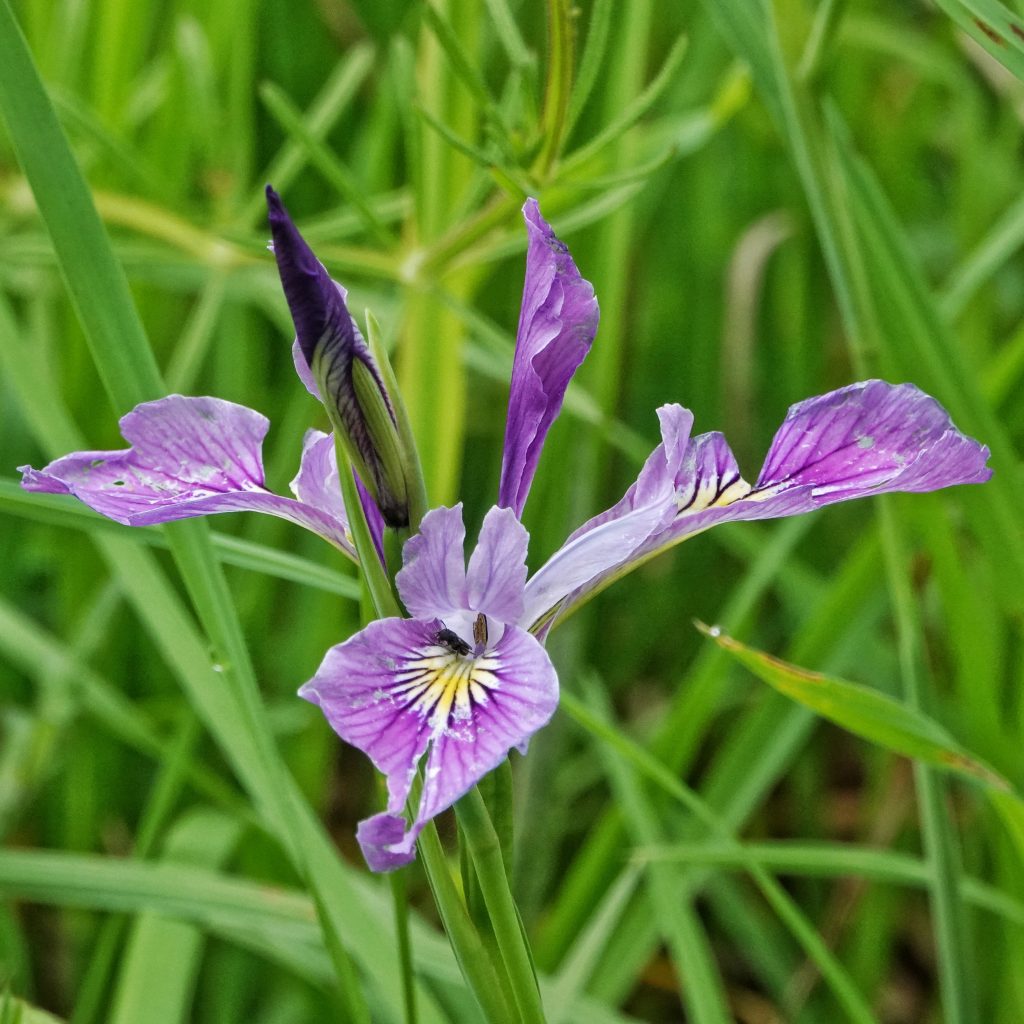
This beautiful plant goes by the common names Oregon Iris, Oregon flag, and Toughleaf Iris, which is the one I prefer because it follows from the specific epithet tenax, which means tough, and the strength of the leaves, especially the central fibers, was what made this plant valuable to the indigenous peoples of the PNW, who used them extensively to make nets and various cordage. Seeing these cords in action, David Douglas commented, possibly hyperbolically, that “…in point of strength it will hold the strongest bullock and is not thicker than the little finger”. Though extracts from this plant are used pharmaceutically to treat nausea and sleeplessness, the whole plant should be considered poisonous, and its use in any herbal treatments should be avoided.
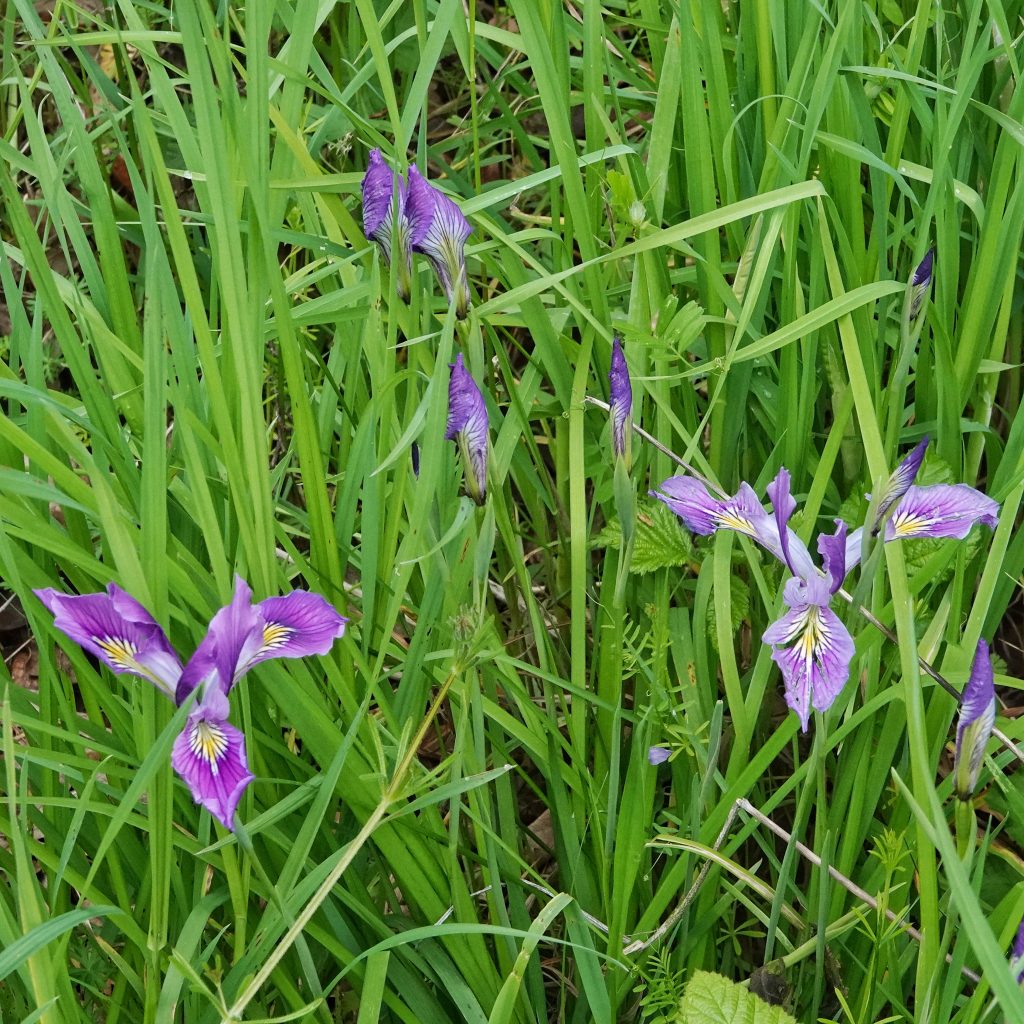
Description– Small (up to 12” tall) irises with narrow (less than 5mm wide) leaves that are mostly basal, reduced on the stem, clasping and spreading; flowers have a short (less than 10mm) tube, pink to purple or blue sepals that spread outward with a hairless white or yellow lined signal (the base of the sepal), and pink to purple or blue petals that are more or less vertical; rhizomes 3-10mm in diameter, and roots fibrous.
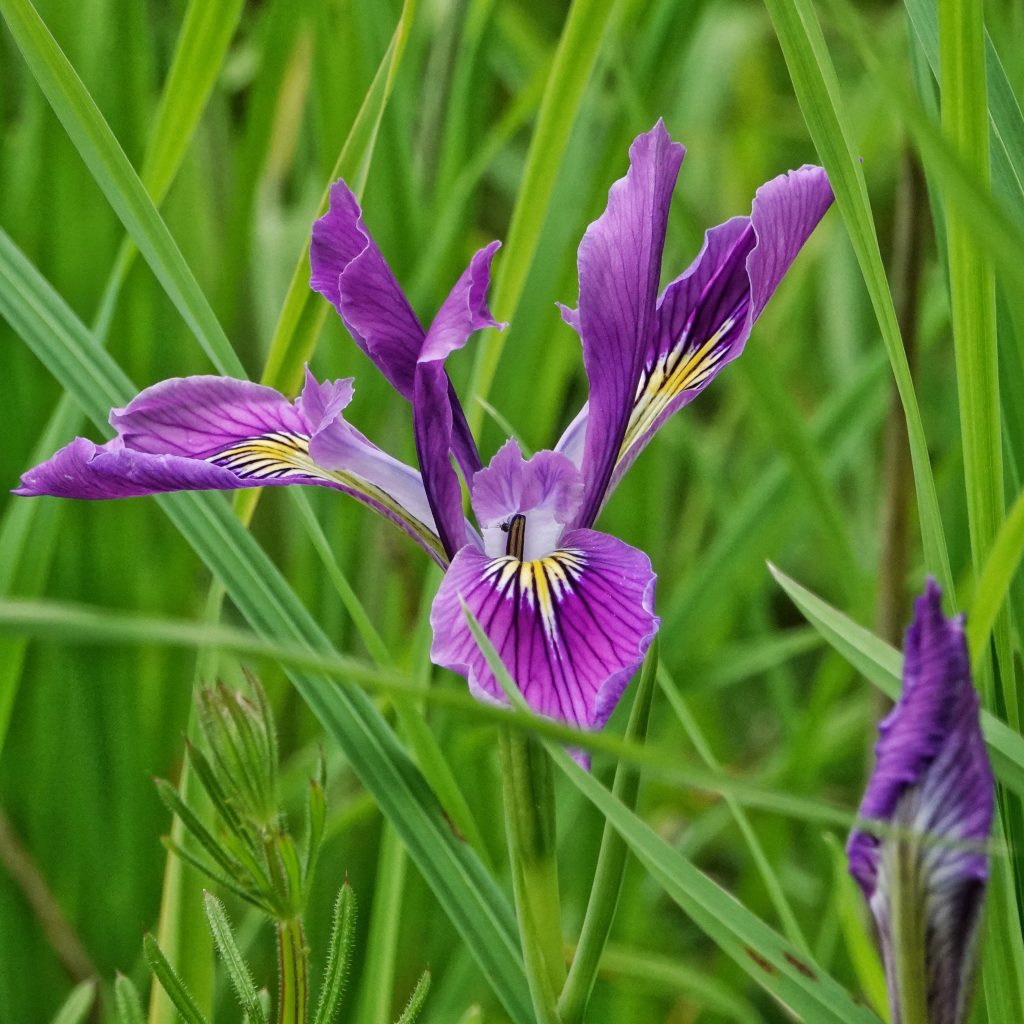
Similar species–Iris douglaiana has flower tube longer than 10mm, grows mostly from the Coast Range to the Pacific; I. missouriensis taller (up to 24”), has stout rhizomes (1-4cm in diameter) and fleshy roots; wider leaves (usually >5mm wide), and is only found east of the Cascades except for islands in Puget Sound; I. tenuis has very light blue to white petals, an inconspicuous crested, rather than lined, signal, and is found only in Oregon in Clackamas, Marion, and Multnomah counties; I. germanica has a strongly bearded signal, and grows up to 4’ tall (and, in my opinion, smells horrible!)
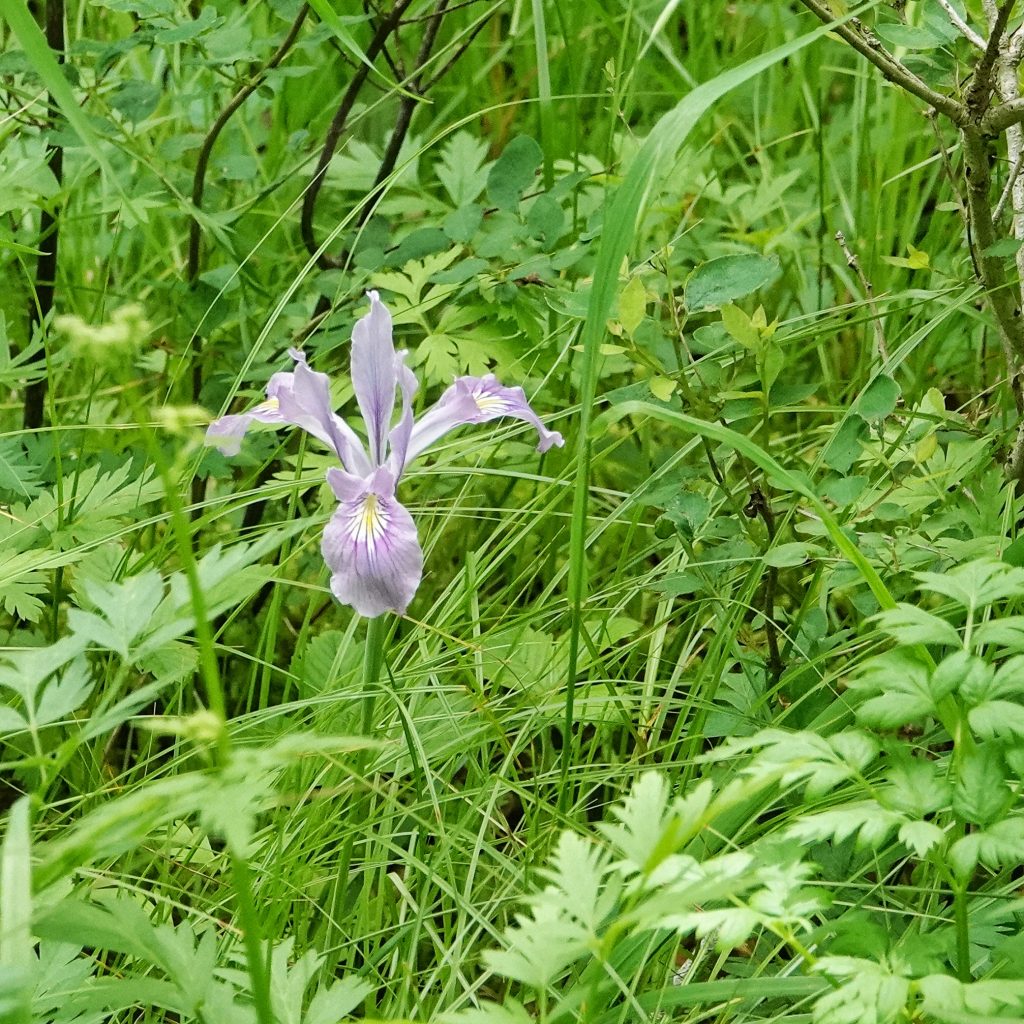
Habitat-Meadows, oak woodlands, edges and openings in conifer and mixed forests, up to 4,000’ elevation.
Range-Native; West of the Cascades and in upper northern California
Reproductive timing-April through June
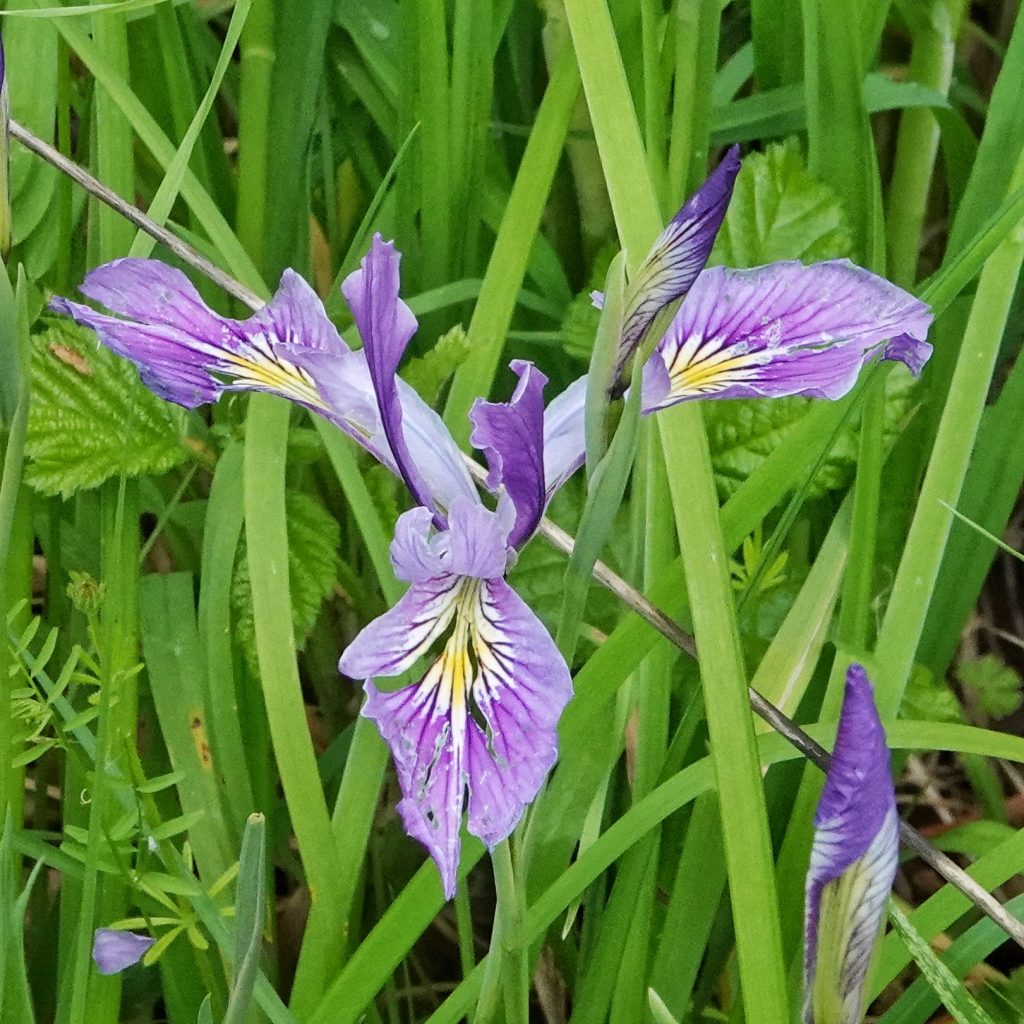
Eaten by– Utilized as a larval host by the moths Amphipoea americana and Macronoctua onusta; crickets and aphids are known to browse the foliage, as do some leaf beetles; mammalian herbivores tend to avoid this plant except in starvation situations, although voles are known to nibble the roots; hummingbirds frequently visit their flowers, at least in garden settings; I can’t find pollination information specific to Iris tenax, but studies of other irises have shown that bees and wasps are their primary pollinators.
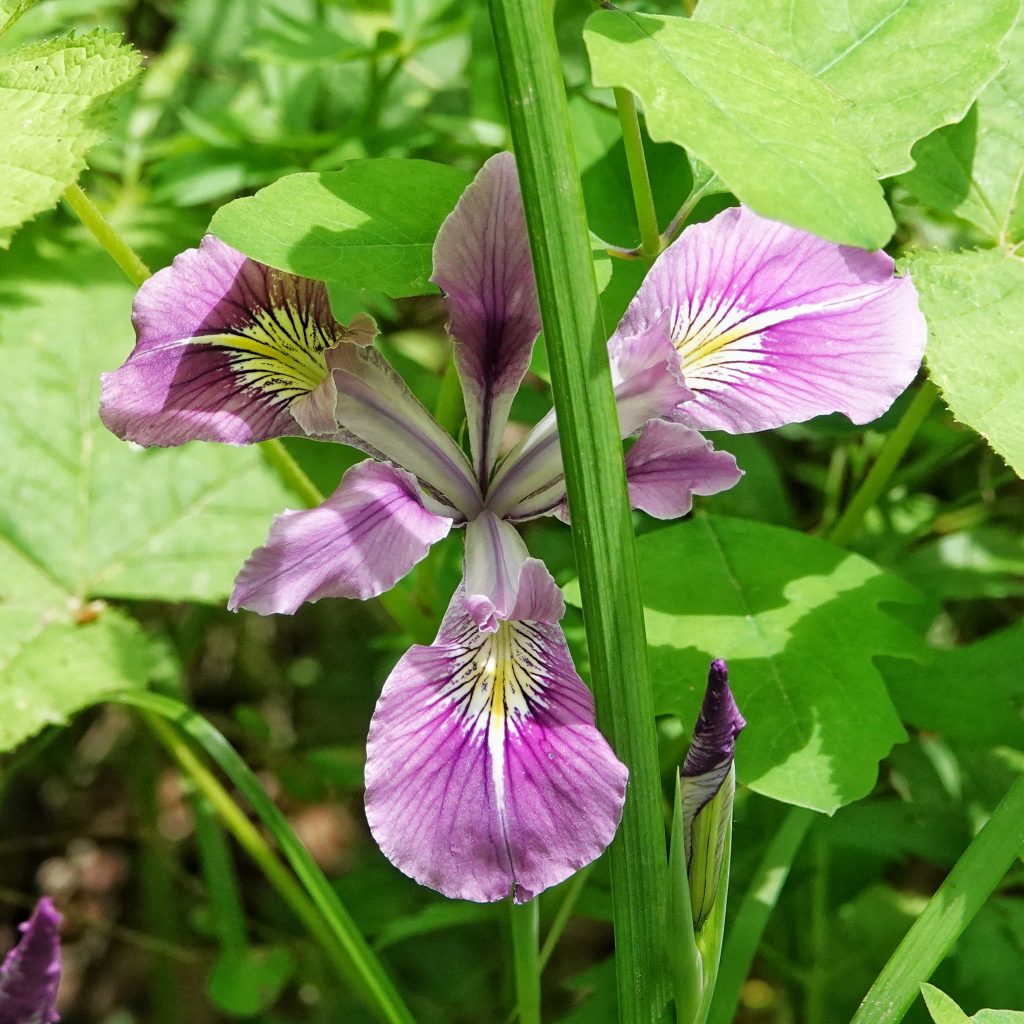
Etymology of names–Iris is from the Greek goddess of the rainbow, which seems an appropriate appellation. The specific epithet tenax is from the Latin word for ‘tough/holding fast’, which refers to the strength of the leaf fibers, and is also the root word for tenacious.
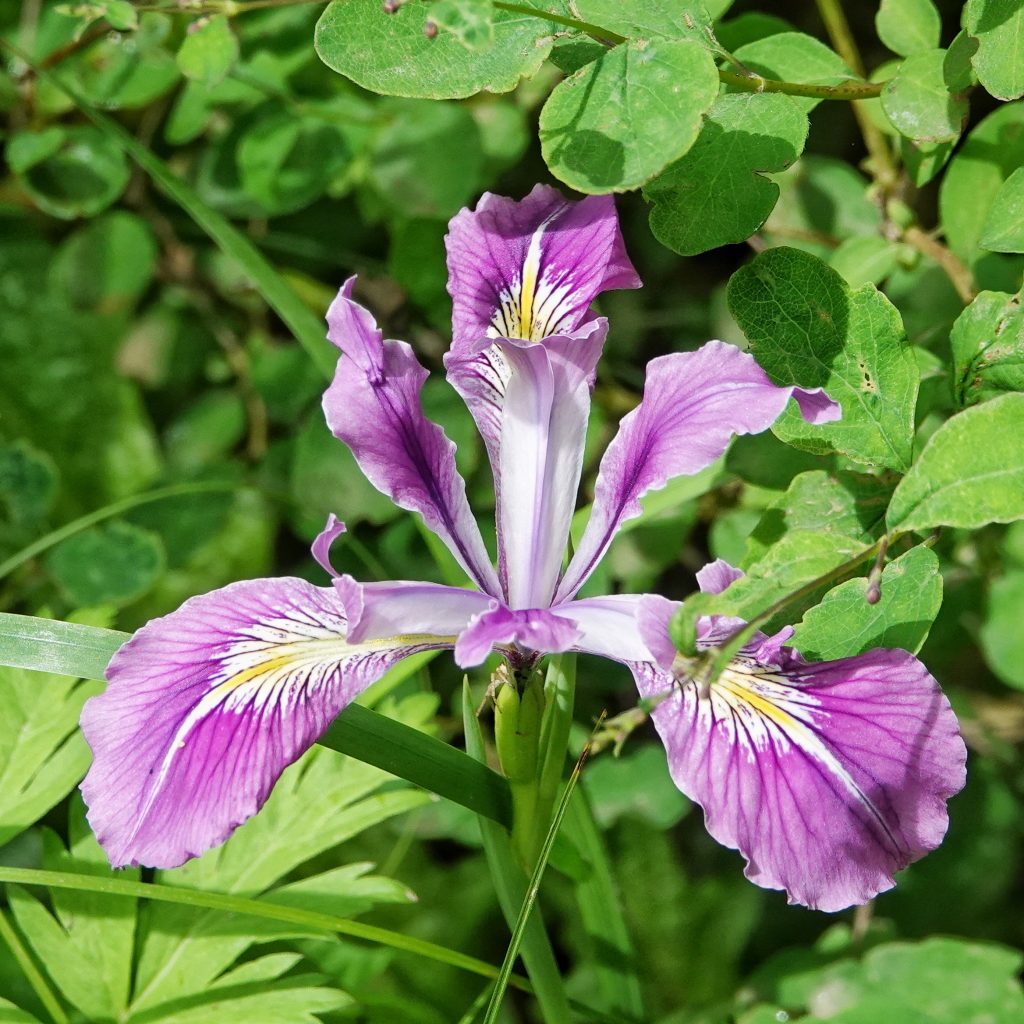
https://www.fs.fed.us/wildflowers/beauty/iris/Pacific_Coast/iris_tenax.shtml
http://biology.burke.washington.edu/herbarium/imagecollection/taxon.php?Taxon=Iris%20tenax
OregonFlora Iris tenax var. tenax
http://pnwplants.wsu.edu/PlantDisplay.aspx?PlantID=588
http://science.halleyhosting.com/nature/gorge/3petal/iris/orflag.html
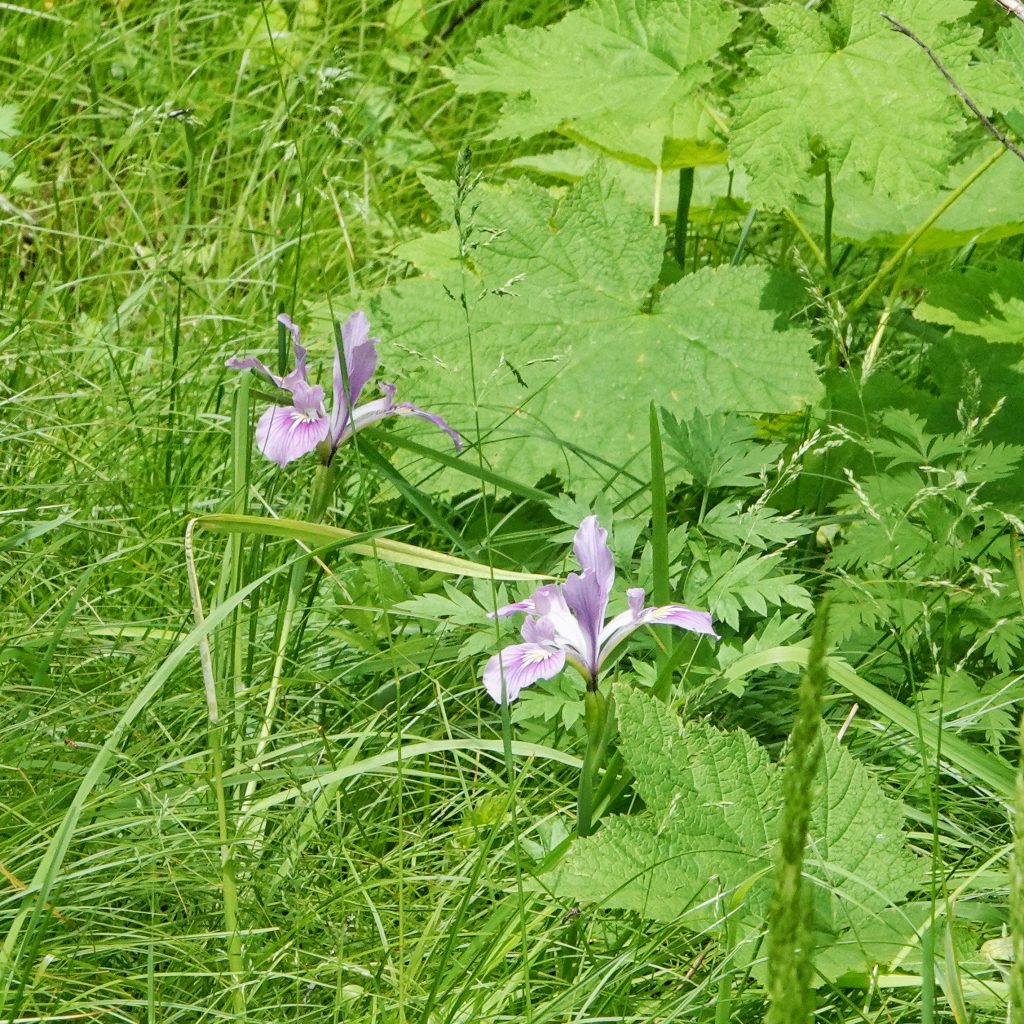
Thank you! I keep seeing these, and keep forgetting to look them up when I get home.
You’re welcome! To my eye they are one of our most beautiful wildflowers.
Thanks for the write up Dan. They are a welcome sight arriving late. They are tenacious and easily propagated by even amateur plant nerds. That fact that they are not browsed by ungulates often makes them especially rare out here in Elk and Blacktail country. Speaking of tenacity, just the thought that indigenous folks could create cordage from those short leaves long and strong enough to create snares capable of felling and elk makes most of my own efforts seem like pure whimsy.
Yes, I know what you mean! The creativity and adaptability of indigenous people, their patience and skill, leaves me in awe!
Great writeup! Having seen these around my hometown of Sweet Home and later in the south hills of Eugene, I assumed when we moved to Oakridge that the cream to white ones here were just a different strain of I. tenax. However, they seem to be I. chrysophylla, yellowleaf iris. Are you familiar with that species?
Yes, the I. chrysophylla are beautiful, but I’ve only seen them once. Thanks for your appreciation!